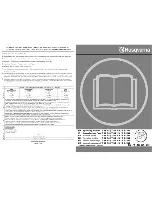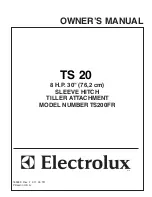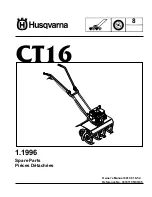
Original Instructions for Installation, Use and Maintenance
Active Chilled Beam Type HDC
Section:
Page:
Date:
AG--B 213.1e
15
Feb. 2010
The Innovation Company
LTG Aktiengesellschaft
E
LTG Aktiengesellschaft
⋅
Grenzstraße 7
⋅
D-70435 Stuttgart
⋅
+49 (0711) 8201-0
⋅
Fax -720
Internet: http://www.LTG-AG.de
⋅
E-Mail: [email protected]
⋅
Printed in Germany
⋅
Ausgaben mit früherem
Datum werden hiermit ungültig
⋅
Technische Änderungen vorbehalten
⋅
Former editions are invalid
⋅
Subject to technical modifications.
3.3
Caloric Output Data
Caloric output data were determined at a test stand in the LTG test lab.
Data are valid if the following applies:
- unit at operating temperature, steady--state condition
- steady--state condition during measurements
- no condensation at the heat exchanger in the cooling mode
- water without additives (drinking water quality)*
- water supply temperatures from 12
_
C to 16
_
C in the cooling mode and 50
_
C -- 60
_
C in the heating mode.
Parameters used:
- specific heat capacity of the water
4186 J/(kgK)
- specific heat capacity of the air
1004 J/(kgK)
- air density
1.2 kg/m
3
To ensure easy transferability, the specific caloric outputs -- i.e. the absolute caloric outputs in relation to the
temperature difference between water intake and induction air before entering the heat exchanger -- are given.
The outputs given in the chart do apply with specific nominal flow rates only. These are stated for each type
and size.
The correction charts give a graphic illustration of how outputs change with other flow rates compared to no-
minal flow rate output.
Flow rates have been determined through calculation and may vary by about 10%.
* Addition of ethylene glycol to lower the freezing point:
To lower the freezing point, cooling water is often added some ethylene glycol. The lower specific thermal
capacity of the mixture reduces the unit’s cooling capacity.
3.4
Acoustic Data
Acoustic data have been determined in a reverberation chamber in the LTG test lab.
The technical data sheet contain the A weighted sound pressure levels L
A18
for different primary air flow ra-
tes/static pressures at primary air socket.
Sound pressure levels apply to a room absorption surface of 18 m
2
which equals a room absorption of about
6 dB(A). Thus, sound power levels may easily be calculated.
L
WA
= L
A18
+ 6 dB(A)
The data given apply to one unit, i.e. one room axle. If more than one unit is installed in the same room, the
sound pressure level will rise accordingly.
Increase in sound level with several sound sources of the same type:
Number of sound sources of the same type
1
2
3
4
Sound level increase [dB]
3
5
6
Measuring accuracy is
10%.
3.5
Hydraulic Data
Heat exchangers are approved for an operating pressure of 10 bar max. (test pressure 16 bar).
Pressures exceeding 10 bar require the express permission of LTG.
Water--side pressure losses have been measured directly at the heat exchanger connections. Further resi-
stances will have to be added.
Measuring accuracy is
10%.
3.6
Weight
Standard units (without water) 17 kg, diffuser 6 kg.
















































